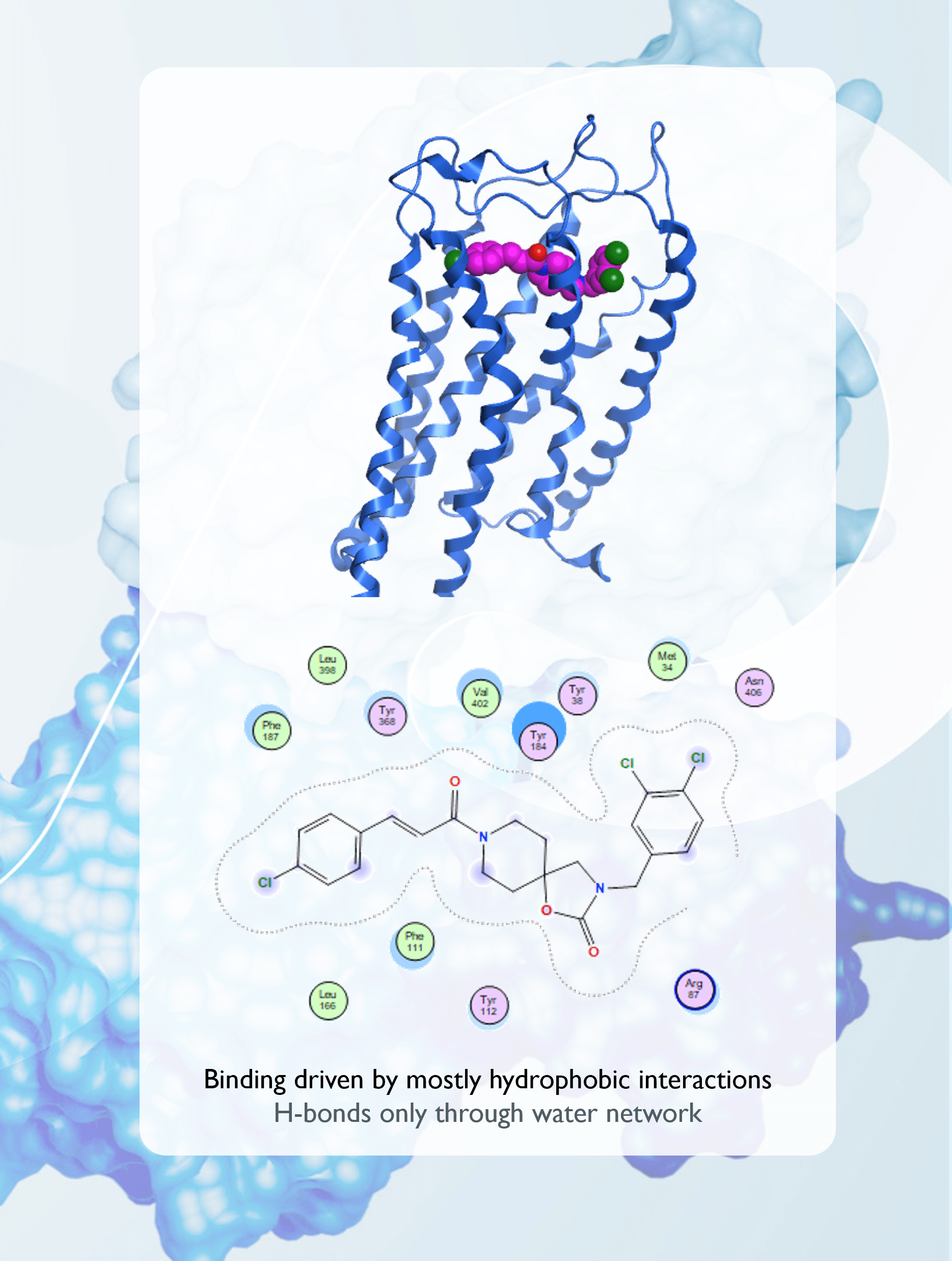RxNfinity™ – a powerful tool for GPCR drug discovery
RxNfinity™ is our novel hit finding platform for accelerating small molecule discovery projects based on a hierarchical docking approach. This novel approach allows for the rapid and dynamic in silico synthesis and virtual screening of ultra large synthesisable chemical space in the context of the binding site.
Introduction
hGPR183 is a G protein-coupled receptor (GPCR) involved in regulating immune responses, including monocyte-macrophage infiltration during viral infections such as SARS-CoV-2. Recent structural data (PDB: 7TUY) revealed its binding interactions with the potent antagonist GSK682753A, enabling structure-based design of novel inhibitors.
Using this structure, RxNfinity™ was deployed to explore over 1 trillion virtual compounds via retrosynthetically feasible libraries targeting the GPR183 binding site. From this, 13 compounds were selected for synthesis, 9 were made, and 7 exhibited Ki < 10 μM (3 with Ki < 1 μM) — yielding a 77% hit rate. All hits were previously unknown chemotypes with clear potential for further optimisation.
For comparison, a conventional screen of 9.1 million commercial compounds using the ProsaRx ProtoScreen approach produced a 17% hit rate, with no compounds showing sub-10 μM potency. While both approaches explored complementary chemical space, the RxNfinity™ designs were markedly more efficient, potent and importantly predicted to exhibit different receptor interactions compared to GSK682753A
This hit rate represents a significant advance over prior GPR183 discovery efforts (2020–2024), which has been reported previously with ≤25% hit rates. RxNfinity™’s ability to deliver potent and novel antagonists from minimal synthesis demonstrates its value as a next-generation tool for GPCR drug discovery.

- GPR183 is the oxysterol receptor (Epstein Barr Virus Receptor 2)
- Has various emerging roles in immune system and also neuropathic pain
- GSK recently published cryoEM structure of antagonist GSK682753A (2022)
- This structure was used for an RxNfinity™ campaign
- Reference ligand was used to define binding site but not for preferred receptor interactions
- Also ran separate structural based virtual screening on ~9M compounds




